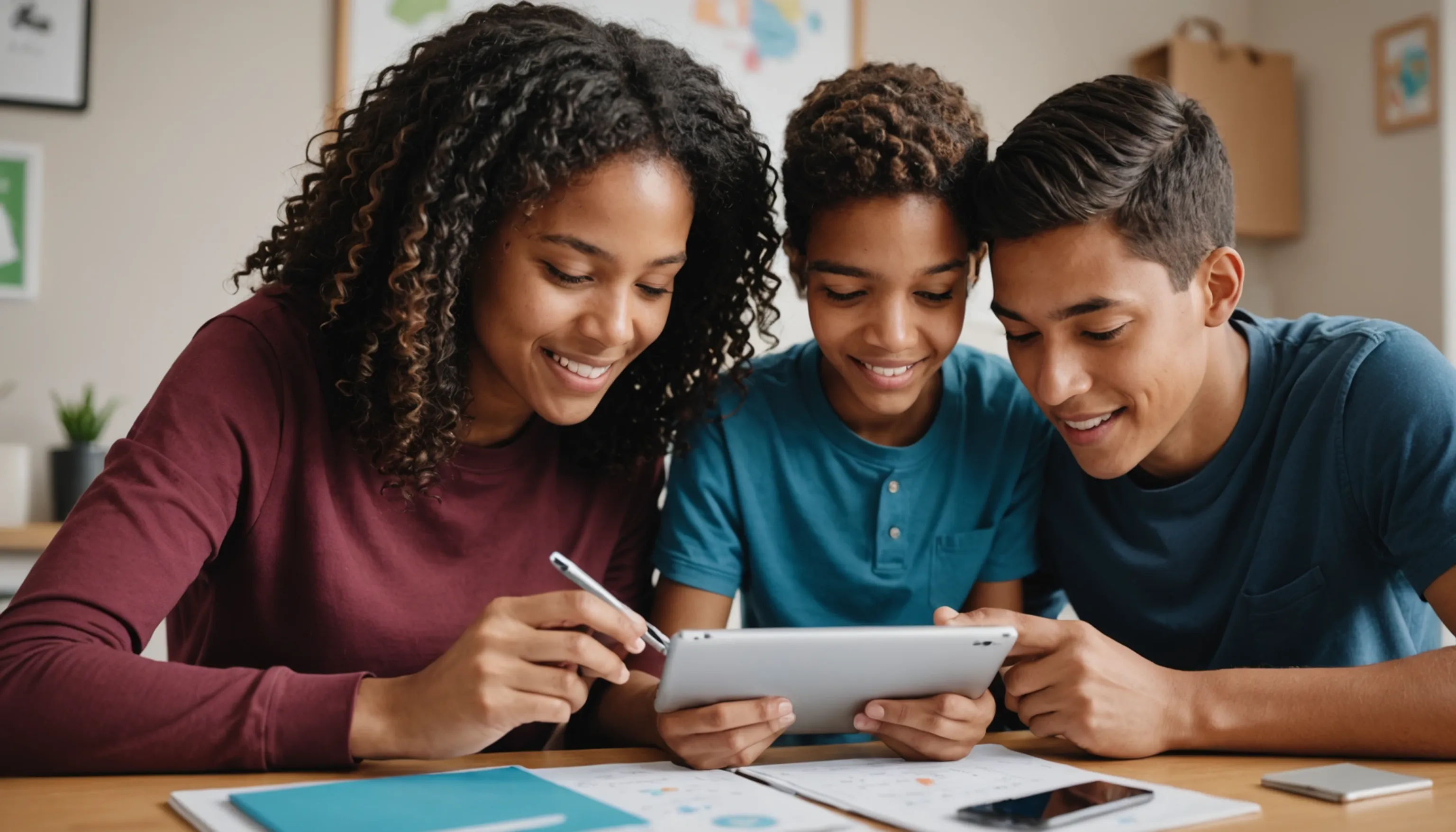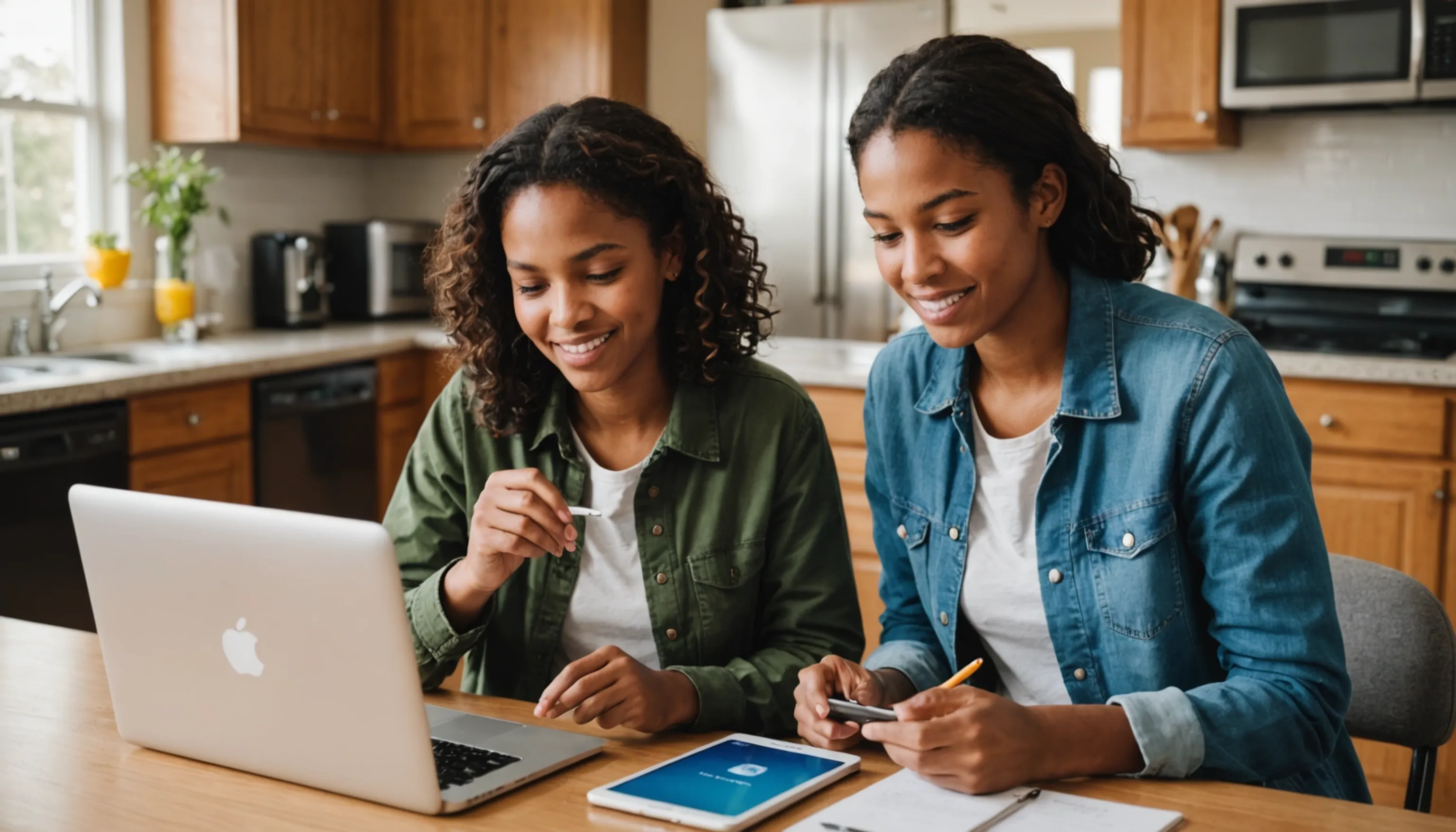How to Use Screen Time for Learning Purposes
 HvWHenry van Wagenberg
HvWHenry van Wagenberg
Using Screen Time for Learning: A Guide for Parents and Teachers
In today's digital age, screen time can be a powerful tool for learning when used effectively. Parents & teachers play a crucial role in guiding teenagers on how to utilize technology for educational purposes. By integrating screen time into learning activities, such as using educational apps or online courses, students can enhance their understanding and retention of various subjects. It's essential to establish a balance between recreational and educational screen time, ensuring that technology serves as an aid for academic growth. This guide will explore various strategies to maximize the benefits of screen time for learning.
Benefits of Screen Time for Learning
Utilizing screen time for educational purposes offers numerous benefits that can significantly enhance a teenager's learning experience. Here are some key advantages:
- Access to Information: The internet provides a vast array of resources, allowing students to explore topics beyond their classroom curriculum. They can access tutorials, lectures, and e-books that cater to their specific learning needs.
- Interactive Learning: Many educational apps & platforms incorporate interactive elements, such as quizzes and games, making learning more engaging. This interactivity helps to maintain the interest of teenagers and improves information retention.
- Personalized Learning: Screen time allows for personalized learning experiences. Students can learn at their own pace and revisit complex topics as needed, which is particularly beneficial for mastering difficult concepts.
- Development of Digital Skills: In today's technology-driven world, digital literacy is crucial. By engaging with educational technology, teenagers can develop essential skills, such as research abilities, problem-solving, and critical thinking.
- Collaboration and Communication: Online platforms enable students to collaborate with peers, participate in group projects, and communicate with educators. This fosters teamwork and enhances social skills.
In summary, when used thoughtfully, screen time can be a valuable educational resource that supports various aspects of learning and development. By leveraging these benefits, parents and teachers can help teenagers make the most of their screen time.
Setting Educational Goals for Screen Time
Setting educational goals for screen time is essential to ensure that technology serves as a productive tool for learning rather than a source of distraction. Here are several strategies to effectively establish these goals:
- Define Clear Objectives: Begin by identifying specific learning objectives that align with your child’s academic needs. Goals could include improving grades in a particular subject, mastering a skill, or completing specific projects.
- Incorporate SMART Goals: Utilize the SMART criteria—Specific, Measurable, Achievable, Relevant, and Time-bound—when setting educational goals. For example, instead of a vague goal like “study more,” aim for “complete three chapters of math by the end of the week.”
- Choose Appropriate Resources: Select educational apps and online resources that align with the established goals. This ensures that screen time is spent on activities that directly contribute to achieving the desired objectives.
- Track Progress: Regularly monitor your child’s progress toward the goals. This could involve weekly check-ins or using tracking tools available in many educational apps. Adjust the goals as necessary based on their performance and engagement.
- Encourage Reflection: Encourage your child to reflect on their achievements and challenges. This practice fosters self-awareness and helps them take ownership of their learning.
By setting clear educational goals for screen time, parents and teachers can guide teenagers to use technology effectively, ultimately enhancing their learning experience and academic success.

Choosing the Right Educational Apps and Tools
Choosing the right educational apps and tools is crucial for maximizing the benefits of screen time in learning. Here are some key considerations to help parents and teachers make informed decisions:
- Identify Learning Objectives: Before selecting apps, determine the specific learning goals you want to achieve. Are you focusing on math skills, reading comprehension, or science concepts? Identifying objectives will help narrow down choices.
- Research and Reviews: Look for apps that have positive reviews from educators and parents. Websites like Common Sense Education provide detailed assessments of educational tools, helping you gauge their effectiveness and suitability for your teenager.
- User-Friendly Interface: The app should have an intuitive design that is easy for teenagers to navigate. A user-friendly interface encourages engagement and reduces frustration, allowing students to focus on learning rather than struggling with technology.
- Interactive Features: Choose apps that offer interactive elements, such as quizzes, games, or virtual labs. These features make learning more engaging and help reinforce concepts through active participation.
- Customization Options: Look for tools that allow customization based on the learner's needs. Apps that adapt to a student's skill level or learning pace can provide a more personalized experience.
- Screen Time Balance: Ensure the app encourages a balance between learning and leisure. Look for tools that provide structured activities without overwhelming the user with excessive screen time.
By carefully selecting educational apps and tools, parents and teachers can create a supportive and enriching learning environment that leverages technology effectively.
Establishing a Healthy Screen Time Routine
Establishing a healthy screen time routine is essential for balancing learning and leisure. Start by setting specific time limits for educational and recreational activities. Consider creating a daily schedule that allocates dedicated blocks for screen time, homework, and offline activities. Encourage regular breaks during prolonged screen use to prevent fatigue and promote focus. Involve teenagers in the planning process to foster responsibility and ownership of their routine. Additionally, model healthy screen habits by limiting your own screen time. This balanced approach ensures that technology serves as a beneficial tool for learning without overwhelming their daily lives.
Creating a Balanced Schedule for Learning and Leisure
Creating a balanced schedule for learning and leisure is vital for teenagers to thrive in today's digital age. A well-structured routine not only enhances productivity but also promotes overall well-being. Here are some strategies to develop an effective schedule:
- Assess Current Habits: Begin by evaluating the current screen time usage and daily activities of the teenager. Identify how much time is spent on educational activities versus recreational use to create a baseline.
- Set Time Blocks: Divide the day into specific time blocks for different activities. Designate fixed periods for homework, studying, and educational apps, as well as time for leisure activities like gaming, social media, or watching videos.
- Include Breaks: Ensure that the schedule incorporates regular breaks. Short breaks during study sessions can help improve focus and retention. For example, consider the Pomodoro Technique, which involves 25 minutes of focused work followed by a 5-minute break.
- Encourage Offline Activities: Balance screen time with offline activities. Encourage teenagers to engage in hobbies, exercise, or spend time outdoors to promote physical health and mental well-being.
- Be Flexible: While a structured schedule is important, allow for flexibility. Adapt the routine based on changing needs, upcoming exams, or special events. This helps maintain motivation and prevents burnout.
By creating a balanced schedule that prioritizes both learning and leisure, parents and teachers can help teenagers make the most of their screen time while ensuring they develop healthy habits for the future.

Monitoring Screen Time: Tools and Techniques
Monitoring screen time is essential for ensuring that teenagers use technology effectively for educational purposes while maintaining a healthy balance with leisure activities. Here are some tools and techniques to help parents and teachers effectively track and manage screen time:
- Use Built-in Device Features: Most smartphones, tablets, and computers come with built-in screen time tracking features. These tools allow users to see how much time they spend on different applications and set limits on usage for specific categories, such as social media or games.
- Third-Party Apps: Consider using third-party apps designed for monitoring screen time. Apps like “Moment,” “Screen Time,” or “Qustodio” provide detailed reports on usage patterns and can help set daily limits and schedules for device usage.
- Set Up Family Accounts: Many educational apps and platforms offer family accounts, enabling parents to monitor their teenager's activity. These accounts often provide insights into what content is being accessed and how much time is spent on educational tasks.
- Establish Regular Check-Ins: Schedule regular discussions about screen time with your teenager. Talk about the content they’re engaging with, their feelings about it, and any challenges they may face. This open communication fosters a supportive environment.
- Encourage Self-Monitoring: Teach teenagers to self-monitor their screen time. Encourage them to set personal goals and reflect on how they feel after extended periods of use, promoting self-awareness and responsibility.
By implementing these tools and techniques, parents and teachers can effectively monitor screen time, ensuring that technology serves as a beneficial resource for learning and personal growth.
Encouraging Active Participation in Online Learning
Encouraging active participation in online learning is crucial for maximizing the educational benefits of screen time. Here are effective strategies for parents and teachers:
- Interactive Platforms: Choose educational platforms that promote interaction, such as forums, quizzes, and live discussions. This encourages students to engage actively with the material and their peers.
- Set Participation Goals: Encourage teenagers to set personal goals for participation, such as asking questions during virtual classes or contributing to group projects. This fosters accountability and involvement.
- Incorporate Group Work: Facilitate group activities and collaborative projects. Working with classmates enhances communication skills and makes learning more enjoyable.
- Provide Feedback: Give constructive feedback on their contributions, recognizing their efforts to participate. This boosts confidence and motivates continued involvement.
By implementing these strategies, parents and teachers can create an engaging online learning environment that encourages active participation and fosters deeper understanding.
Promoting Interactive and Engaging Learning Experiences
Promoting interactive and engaging learning experiences is essential for keeping teenagers motivated and enhancing their understanding of the material. Here are several effective strategies that parents and teachers can implement:
- Incorporate Gamification: Use educational games and quizzes to make learning fun. Gamification elements, such as points, badges, and leaderboards, can foster healthy competition and encourage participation.
- Utilize Multimedia Resources: Leverage videos, podcasts, and interactive simulations to cater to various learning styles. Visual and auditory resources can enhance comprehension and retention of complex concepts.
- Encourage Hands-On Activities: Incorporate practical activities, such as virtual labs, DIY projects, or real-world problem-solving scenarios. These hands-on experiences can make abstract concepts more tangible and relatable.
- Facilitate Discussions and Debates: Create opportunities for students to engage in discussions or debates on relevant topics. This promotes critical thinking and helps them articulate their ideas and opinions.
- Use Collaborative Tools: Employ online collaboration tools, such as Google Docs or Padlet, to enable group projects and brainstorming sessions. These platforms facilitate teamwork and allow students to learn from one another.
By fostering interactive and engaging learning experiences, parents and teachers can create an enriching educational environment that captivates teenagers and encourages them to take an active role in their learning journey.
Fostering Critical Thinking Through Screen Time Activities
Fostering critical thinking through screen time activities is vital for preparing teenagers to navigate the complexities of the modern world. Here are some effective strategies that parents and teachers can use to promote critical thinking skills:
- Encourage Analytical Discussions: Use online articles, videos, or podcasts as discussion starters. Ask teenagers to analyze the content, identify biases, and express their opinions. This encourages them to think critically about the information presented.
- Utilize Problem-Solving Games: Introduce educational games that require strategic thinking and problem-solving. Puzzle games, escape rooms, and logic-based challenges can enhance cognitive skills while making learning enjoyable.
- Promote Research Projects: Assign research-based projects that require students to investigate a topic, evaluate sources, and draw conclusions. This process helps them develop the ability to assess information critically and make informed decisions.
- Incorporate Debate Activities: Organize online debates on current events or controversial topics. This not only fosters critical thinking but also enhances communication skills and teaches teenagers to formulate and defend their arguments.
- Reflect on Learning: Encourage teenagers to reflect on their screen time activities. Ask them to consider what they learned, how they approached challenges, and what strategies worked. This reflective practice cultivates a mindset of continuous improvement.
By implementing these strategies, parents and teachers can effectively foster critical thinking skills through screen time activities, empowering teenagers to become thoughtful and analytical learners.
